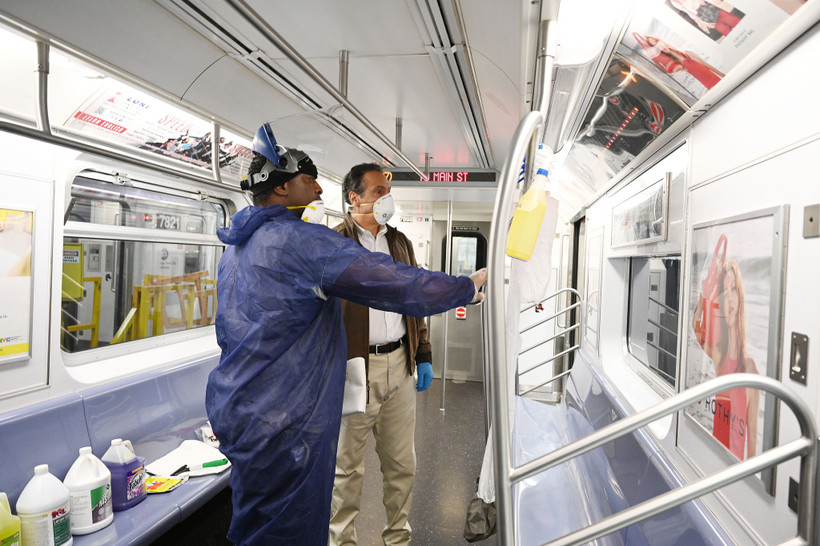The MTA’s $500 million nightly cleaning and shutdown isn’t worth it, experts say
Sanitizing the subways every night offers little protection against COVID, scientists say. MTA board members say they’ve raised questions - but received few answers.

Sanitizing the subways every night offers little protection against COVID, scientists say. MTA board members say they’ve raised questions - but received few answers.

At New York Focus, our central mission is to help readers better understand how New York really works. If you think this article succeeded, please consider supporting our mission and making more stories like this one possible.
New York is an incongruous state. We’re home to fabulous wealth — if the state were a country, it would have the tenth largest economy in the world — but also the highest rate of wealth inequality. We’re among the most diverse – but also the most segregated. We passed the nation’s most ambitious climate law — but haven’t been meeting its deadlines and continue to subsidize industries hastening the climate crisis.
As New York’s only statewide nonprofit news publication, our journalism exists to help you make sense of these contradictions. Our work scrutinizes how power works in the state, unpacks who’s really calling the shots, and reveals how obscure decisions shape ordinary New Yorkers’ lives.
In the last two decades, the number of local news outlets in New York have been nearly slashed in half, allowing elected officials and powerful individuals to increasingly operate in the dark — with the average New Yorker none the wiser.
We’re on a mission to change that. Our work has already shown what can happen when those with power know that someone is watching, with stories that have prompted policy changes and spurred legislation. We have ambitious plans for the rest of the year and beyond, including tackling new beats and more hard-hitting stories — but we need your help to make them a reality.
If you’re able, please consider supporting our journalism with a one-time gift or a monthly gift. We can't do this work without you.
Thank you,

Nonprofits form the backbone of the state’s social service sector, and they may be getting some overdue relief in this year’s budget.
In New York, half of CIU exonerations involve prosecutorial misconduct, but DAs rarely acknowledge who got it wrong.
The budget plans set up a fight with Governor Kathy Hochul, who did not propose substantial new investments at all.
Our team will be descending upon Albany on Tuesday. Here’s what they’ll be watching.
New York Focus reporter Sam Mellins reflects on what he learned this year, and teases what lies ahead for 2025.
New York has a little-noticed tool to shift billions of highway dollars to climate-friendly public transit projects. The governor doesn’t seem interested.